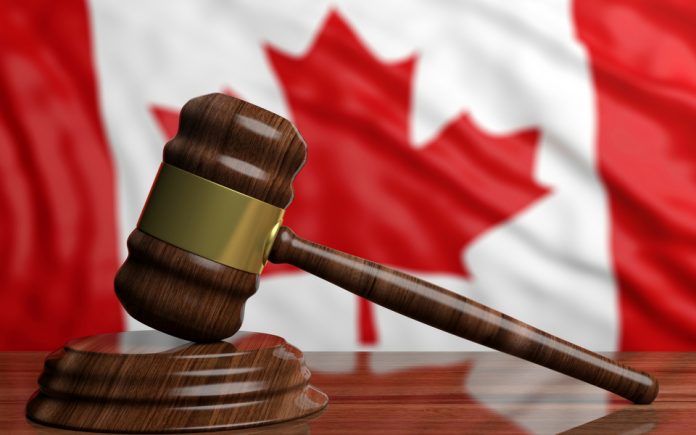This article was written by Mahesh P Sudhakaran pursuing BBA LLB in KLE Society’s Law College Bangalore. This article gives a brief overview of the minimum wage system in Canada.
This article has been published by Sneha Mahawar.
Table of Contents
Introduction
The debate on the role of the state is as old as aristocratic principles. After centuries of debate, a certain kind of consensus was arrived at which asserted that the state’s ultimate responsibility is to ensure the well-being of all its citizens, and with this came the idea of a welfare state. A welfare state is a state that is focused on providing basic social and economic security to its citizens by protecting them from inevitable societal risks such as old age, unemployment, accidents, and sickness. Its roots in Canada can be traced to the initial thirty years after Confederation. During this time, the function of government was under scrutiny. The idea of a welfare state gives rise to the need for social welfare legislation. As the welfare of citizens is the desired end, legislation is the means to such an end. One of the key forms of social legislation is the minimum wage legislation. The minimum wage is a key policy tool that acts as a catalyst for poverty reduction and social justice. This concept in itself was established in the fall of the 19th century in New Zealand and Australia, and within 30 years it created its formidable presence in Latin America and the Caribbean (LAC). The minimum wage was adopted as an effective social justice tool to ensure socially acceptable wages for workers. The underlying ideology behind minimum wages was accommodated by legislatures across the globe due to public demands for social justice among workers. The minimum wage system acts as a catalyst for social justice by dealing with key social issues like income inequality, poverty, and inflation.
What is minimum wage
The ILO defined minimum wages as “the minimum amount of remuneration that an employer is required to pay wage earners for the work performed during a given period, which cannot be reduced by collective agreement or an individual contract”. This definition in general talks about the binding nature of this concept. Minimum wages in general can be set by statute, a wage board, a wage council, a decision of a competent authority, or by industrial or labour courts or tribunals. Every social welfare legislation aims to curb a social evil, minimum wage seeks to protect workers against unreasonable and unduly low pay. It can also be deemed a policy decision with the prospect of fighting poverty and income inequality. It is pertinent to understand that minimum wages alone can’t be designated to solve these issues, they are corollary to various other policies and norms and complement various other social and employment policies. In simpler terms, the minimum wage is the lowest wage a worker may be paid as per law. It imposes legal accountability upon the employers, forcing them to pay wages not below the lawfully decided rate. It is the price ceiling below which labourers shouldn’t sell their labour. Originally the purpose of creating a minimum wage system was to deal with a social issue termed ‘sweating’, which means working at wages so low that they were inadequate to sustain or support the basic necessities of a family.
Origin of minimum wage in Canada
In Canada, the early 20th century marked the origin of the first minimum wage rate. It initially applied primarily to women and children. Manitoba and British Columbia were the first provinces to introduce minimum wage legislation in 1918, followed by Ontario, Quebec, Nova Scotia, and Saskatchewan, who followed suit in 1920. Prince Edward Island was the last province to adopt minimum wage legislation that accommodates both men and women in 1960. In Canada, the minimum wage is the lowest wage rate employers can legally pay an employee and is a key labour code standard.
Pre 1996 approach
After the establishment of part III of the code, the federal minimum wage was specified in the Code and later on in 1971, authority was conferred upon the Governor in Council to adjust these rates through regulation. It is important to note that, other than federal rates, there are provincial and territorial minimum wage rates as well. After the adoption of the concept, the federal minimum wage was set at $1.25 and later increased to $4.00 per hour. During the mid-90s, the federal rate took a dive below territorial and provincial rates, amounting to $5.95 hourly.
Post-1996 approach and current approach
Post the amendment the significant dive was addressed in order to accommodate the changes of the provincial and territorial rate automatically into the federal minimum wage rate in order to avoid another similar scenario, this was done with the view to ensure that the federal rate would adapt to the changes in economic and social conditions. It is important to note that the Canadian government does not set a maximum limit to the amount of wages that can be paid but only the minimum rate of wages to be paid. Mostly all workers are deemed eligible for minimum wage, irrespective of whether they work full-time, part-time or even casually.
Objectives
The following are the purposes for which minimum wage legislation was enacted in Canada:
Dealing with poverty
The minimum wage system is an effective means of poverty alleviation as it ensures basic pay to all, assisting in maintaining a balanced standard of living.
Keeping a check on wage inequality
The minimum wage system ensures equal pay for all people carrying out the same quotient of work, upholding the idea of wage equality and keeping a check on wage inequality.
Put a floor limit below which transactions are not allowed to occur
The minimum wage system provides a certain standard for transactions, giving an insight into the limit below which transactions aren’t supposed to take place.
Elimination of low-wage work and facilitate movement growth within the value-added chain
Since the beginning of time, people have been paid for their work disproportionately to the amount undertaken by them. The lack of balance between the work done and the payment of wages was significant. However, the minimum wage system prohibits the whole idea of low-wage work as it provides standards of wages that are to be compulsorily complied with.
Give incentives to leave income maintenance programs
The minimum wage system in itself entitles workers to a certain sum of wages; hence, reliance on other benefit programs can be withdrawn.
Facilitating the growth of aggregate demand with associated multiplier effects
As each person is guaranteed payment for the work carried out based on inflation and CPI, the purchasing power of an individual grows and, as a result, the same person’s capability to buy increases, causing an increase in the aggregate demand for goods and services.
Assistance in payment of rising tuition fees
The minimum wage system serves as an excellent tool for both domestic and international students, giving them an opportunity to earn part-time wages that are consistent and sufficient based on current inflation levels. This evidently helps students meet their day-to-day expenses and also tuition fees.
Taking care of the unprotected who have minimal individual or collective bargaining power
The minimum wage system is an equitable social reform that entitles workers to a certain sum of wages for their work, entitling them to wages based on the ever-varying prices of necessities. Such earnings enable the unprotected classes of society to be entitled to equitable compensation without any discrimination.
Reduction of low-wage competition
There is absolutely no room for low-wage competition as each worker is entitled to the same sum of wages for the same amount of work.
Limit the need for unions
The guarantee of minimum wages upholds the basic rights of labourers giving them access to necessities. This eliminates the need for unions to a certain extent as the basic rights of workers are already protected and recognised through labour standards.
Model of emulation for others
Being a welfare state and embodying social welfare legislation like the minimum wage is a step in the right direction and sets the right example in terms of good governance and the public good.
Calculation of minimum wage rate
The minimum wage is calculated and varies in various provinces and territories. Rates can be set and changes can be made according to regulations, rates of inflation, and social and other economic conditions. Yukon was the first jurisdiction to annually review the minimum wage when compared to the Consumer Price Index (CPI).
Types of minimum wage rates in Canada
- Federal Minimum wage
- Provincial minimum wage
- Special minimum wage
Federal minimum wage
The federal minimum wage is the type of minimum wage applicable to workers in the federally regulated private sector. This includes the following- employees in federally regulated industries, federal Crown corporations and certain Indigenous government activities on First Nations reserves. Every employee working in a federally regulated business or industry has certain guaranteed protections related to the payment of wages and other amounts. As per fresh guidelines on December 29, 2021, the federal minimum wage is $15.00 per hour. Any federally employed person is entitled to the same. This also includes interns. On 1st of April every year, the federal minimum wage rate may change depending upon the rate of inflation. The increase is based on Canada’s Consumer Price Index for the previous year.
Employees under 17 years of age
The rule for persons under the age of 17 is as under:
Such person can work if-
- The person is not required by provincial law to attend school
- The work carried out by such person is not likely to endanger their health or safety.
- They are not required to work underground in a mine or in employment prohibited for young workers under the following:
- Explosives Regulations, 2013,
- Nuclear Safety and Control Act and Regulations, or Canada Shipping Act, 2001, and
- Such a person is not required to work between 11 p.m. on one day and 6 a.m. the next day.
The minimum wage also applies to a person under the age of 17. However, if that person’s respective province or territory fixes the minimum hourly rate based on age, then the minimum wage will be the highest of those rates among either territorial or provincial rates.
Part III of the Labour Code
Part III of the Canada Labour Code is concerned with federal labour standards. These set forth provisions for employment conditions, work hours, wages payment, leaves, vacation, holidays, and more. Section 178 of this Code talks about federal minimum wages. The current basis pertaining to the minimum wage has two key elements in virtue of Section 178 of Part III of the Code. It states that:
- First, the federal minimum wage is set as the “minimum hourly rate fixed, from time to time, by or under an Act of the legislature of the province where the employee is usually employed and that is generally applicable regardless of occupation, status or work experience .”
- Second, the Governor in Council has the authority, by order, to
a) replace the minimum hourly rate that has been fixed with respect to employment in a province with another rate;
b) fix a minimum hourly rate with respect to employment in a province if no such minimum hourly rate has been fixed.
When payment isn’t on an hourly basis
Section 178 also gives directions pertaining to scenarios wherein workers are paid on a basis other than an hourly rate, In such situations, workers are to be paid in an equivalent denomination as if they were paid hourly.
Reporting upon call
When workers arrive at work after being called by employers, they must be paid for not less than 3 hours at their regular rate of wages regardless of the amount of work done.
Exemptions
- If work carried out by the person is under Provincial Apprenticeship Act then this rule is exempted.
- account of the employer arranging food and accomodation, however wages can’t be reduced for more than 50 cents per meal and 60 cents per day for each day of accommodation.
Wage recovery system
There is a wage recovery system that assists federal employees. It empowers the labour program to collect sums for the recovery of wages. It can collect wages for hours worked, pay on vacation, severance, termination pay, etc. It helps in wage recovery for up to 24 weeks, and this system also helps workers to determine their own wages in circumstances wherein the employer does not provide payroll. This system also formulates a redressal system which comprises a review and appeal process.
Provincial minimum wages
A federal minimum wage applies to anyone working in federally regulated industries, and for workers who don’t work for these federally regulated industries, a provincial minimum wage applies. All of the nation’s 10 provinces and three territories have their own distinct rates of minimum wages. Provincial wage rates in each of the provinces and territories can be found here. Minimum wages vary in different ways within the nation as they are set forth by the labour legislation of each province and territory. There are certain provinces, like Saskatchewan, Manitoba and New Brunswick, that change or modify their minimum wages as per their provincial cpi, which tracks the changes in consumer prices or inflation, on the other hand, the Northwest Territories’ minimum wage is scrutinized every two years by a special Minimum Wage Committee to deliberate on whether or not the rate should be increased.
Special minimum wage
Another type of minimum wage system in Canada is the special minimum wage. Federal or provincial minimum wage rates apply throughout the country generally, but there are certain provinces wherein certain special wage rates operate. These kinds of special minimum wage rates apply on the basis of different parameters applied in Ontario, Quebec, and British Columbia. These parameters maybe:
- Special rate for students
- Special rate for homeworkers
- Hunting, fishing and wilderness guides special rate
- Special rates for raspberry pickers
- Special rate for strawberry pickers
- Special rate for live-in domestic workers
Live-in camp leaders’ special rate deductions
The employer is entitled to make certain deductions from the wages being paid, these include:
Deductions mandated by law
- Tax deductions
- Insurance premiums
- Deductions ordered by the court orders for child support
- Trade union dues
- Overpaid salaries or wages
Deductions voluntarily requested by workers
- Donations for the purpose of charity
- Savings deposits or plans
- Medical funds or premiums(including dental)
- Life insurance
- Retirement a.k.a pension plans
It is important to note that any such voluntary request or authorization for deduction must be in writing and must consist of the specific amount and the purpose for deductions (Including frequency of deductions as well).
How can you supplement your minimum wage income
Sometimes it may become necessary to derive other means of supplementing minimum wage income. The rampant growth of technology also paved the way to modern and innovative modes of supplementing one’s income in Canada. These modes include:
- Start a profitable blog
- Participate in Market research
- Becoming a proofreader
- Rent out a car to deliver goods
- Freelance work
- Babysitting
- Freelance work
Conclusion
The Constitution of Canada imposes a duty upon the state to safeguard the well-being of its citizens. The state, in order to fulfil its role as a welfare state, needs to adopt social welfare legislation that directly benefits the common man for the sustenance of life with dignity, minimum wage is one such social legislation. Canada provides assurance and access to minimum wage at federal, provincial, and other special levels based on regulations, inflation and Consumer Price Index. Part III of the Canadian labour code lays down labour standards which is concerned with protecting the interest of the federal workforce providing them legally enforceable minimum wages, absolutely entitling the workers to a particular minimum wage rate.
Frequently Asked Questions (FAQs)
What is the Minimum Wage provided to International Students who work in Canada while pursuing education?
An international student pursuing education in Canada at a Designated Learning Institution (DLI) is eligible to work part-time up to 20 hours per week while school within session and when it comes to full-time up to 40 hours a week during scheduled school breaks and holidays. This includes spring break, winter break, or summer holidays. Approximately on average, an international student engaging in part-time work can earn between $800 CAD to $1,500 CAD every month and students working full-time may earn between $1,600 CAD to $3,000 CAD per month.
What is the basic salary or pay in Canada?
Canadian salary for employees across the country at an average based on data as per January 2020 was $1,050.59/week. This implies that the yearly average wage for persons working full-time is just above $54,630 per year.
References
- https://www.savvynewcanadians.com/how-to-make-money-home-online-canada/
- https://www.canada.ca/en/services/benefits/publicpensions/cpp/old-age-security/guaranteed-income-supplement/eligibility.html
- https://www150.statcan.gc.ca/n1/pub/75-004-m/75-004-m2019003-eng.htm
- https://www.nerdwallet.com/ca/personal-finance/canada-minmimum-wage-explained
- https://www.retailcouncil.org/resources/quick-facts/minimum-wage-by-province/
- https://www.gov.mb.ca/labour/standards/index.html
- https://laws-lois.justice.gc.ca/Search/Search.aspx?txtS3archA11=minimum+wage&txtT1tl3=%22Canada+Labour+Code%22&h1ts0n1y=0&ddC0nt3ntTyp3=Acts
- https://www.canada.ca/en/employment-social-development/corporate/portfolio/labour/programs/labour-standards/reports/issue-paper-federal-minimum-wage.html
- https://www.thecanadianencyclopedia.ca/en/article/minimum-wage
- https://research.upjohn.org/cgi/viewcontent.cgi?article=1245&context=up_press
- https://www.ilo.org/travail/lang–en/index.htm
- https://link.springer.com/article/10.1007/BF01404930
- https://www.sciencedirect.com/topics/economics-econometrics-and-finance/welfare-state
Books
- Minimum wages by David Neumark and William L. Wascher
- Minimum wages in Canada: Theory, evidence and policy by Morley Gunderson
Students of Lawsikho courses regularly produce writing assignments and work on practical exercises as a part of their coursework and develop themselves in real-life practical skills.
LawSikho has created a telegram group for exchanging legal knowledge, referrals, and various opportunities. You can click on this link and join:
Follow us on Instagram and subscribe to our YouTube channel for more amazing legal content.
 Serato DJ Crack 2025Serato DJ PRO Crack
Serato DJ Crack 2025Serato DJ PRO Crack















 Allow notifications
Allow notifications



